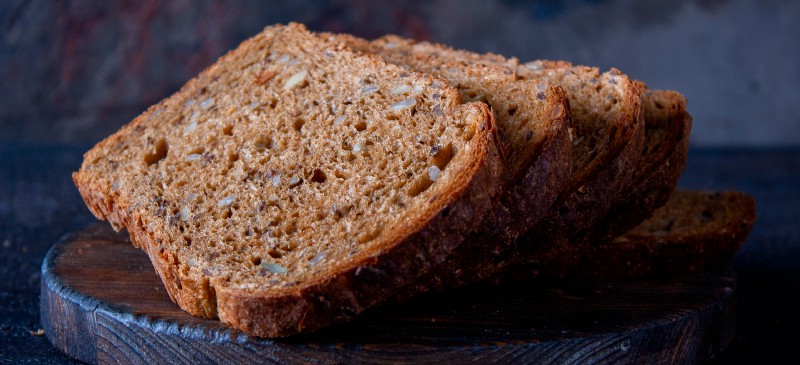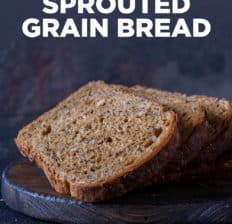This Dr. Axe content is medically reviewed or fact checked to ensure factually accurate information.
With strict editorial sourcing guidelines, we only link to academic research institutions, reputable media sites and, when research is available, medically peer-reviewed studies. Note that the numbers in parentheses (1, 2, etc.) are clickable links to these studies.
The information in our articles is NOT intended to replace a one-on-one relationship with a qualified health care professional and is not intended as medical advice.
This article is based on scientific evidence, written by experts and fact checked by our trained editorial staff. Note that the numbers in parentheses (1, 2, etc.) are clickable links to medically peer-reviewed studies.
Our team includes licensed nutritionists and dietitians, certified health education specialists, as well as certified strength and conditioning specialists, personal trainers and corrective exercise specialists. Our team aims to be not only thorough with its research, but also objective and unbiased.
The information in our articles is NOT intended to replace a one-on-one relationship with a qualified health care professional and is not intended as medical advice.
Why Sprouted Grain Bread Is Healthier than Regular Bread
March 9, 2022

By now, you’ve probably heard about and seen sprouted grain bread at the grocery store or farmers market. It may seem like a new dietary craze, but the methods used to prepare sprouted bread have existed for thousands of years.
If you’re looking for a healthier, more digestible and better absorbed type of bread, it’s time to look into sprouted grain bread. It’s made with nutrient-rich ingredients, and they’re soaked to release all of their healthy goodness.
If you love preparing your own healthful foods and knowing exactly what’s in them, you can sprout grains for yourself at home and prepare a homemade loaf that can be enjoyed (from the freezer) for months.
What Is Sprouted Grain Bread?
Sprouted grain bread is made from sprouted or germinated whole grains. The sprouting process breaks down the carbohydrates and proteins in the grain, which may make it easier to digest and absorb nutrients.
During the sprouting process, grains are soaked in water until they begin to grow. The sprouts are then drained and ground so they can be used to make bread.
A typical loaf of whole-grain bread is made with flour and ground grains that haven’t gone through the soaking and sprouting process. White breads are made with only part of the grain and go through a process that removes most of the nutritional value.
Although the term “sprouted” is used in many bread products and is associated many benefits, not all sprouted grain breads are equal. The best types of sprouted bread indicate that they are 100 percent sprouted, like Ezekiel bread.
These breads are often found in the refrigerated or freezer sections because they aren’t made with preservatives and don’t have long shelf lives. High-quality sprouted whole grain bread typically contains both grains and legumes, such as wheat, millet, rye, spelt, barely and lentils.
Related: Top 5 Healthiest Bread Types to Eat
Benefits
Sprouting grains changes their nutritional profile and allows them to be more easily digested by the body. If you’re looking for the best nutritional punch from a slice of bread, a good-quality sprouted bread is the way to go, and here’s why:
1. Contains More Nutrients
Sprouted grain bread contains a broader range of nutrients than whole grain or white breads. Several studies have found that when seeds are sprouted, the fiber content increases and becomes more available.
Reports show that sprouting increases concentrations of crude fiber, which is the fiber that makes up the cell walls of plants. When we consume plant’s crude fiber, the fiber cannot actually be absorbed within the digestive tract, and therefore it helps push waste and toxins out of the gut and regulate bowel movements.
Sprouted wheat bread also typically contains higher levels of protein, vitamin C and B vitamins. That’s because the sprouting process produces more nutrients, and these breads often contain several types of grains and legumes that provide macronutrients and micronutrients.
2. Supports Blood Sugar Control
Regular, non-sprouted grains are very high in carbohydrates, especially a type of carbohydrate called amylopectin, which can really affect blood sugar levels. Plus, it makes whole grains one of those notorious metabolism death foods.
It can increase your risk of diabetes and other metabolic issues.
A study published in the Journal of Nutrition and Metabolism found that the glycemic response to sprouted grain bread was reduced in overweight and obese men, while whole grain breads did not improve metabolic responses.
3. Kills Phytic Acid
A major issue with white or whole wheat bread is that it contains phytic acid. This acid is known as a mineral blocker or enzyme inhibitor, and it’s what binds to minerals.
When you eat wheat bread, it may say, “contains five grams of magnesium and 10 grams of calcium,” but the truth is most of those vitamins are bound up in phytic acid, so they’re locked in together — and when you consume that wheat bread your body can’t digest it.
In fact, a study by the Weston A. Price Foundation shows that about 80 percent of the iron and magnesium you get in whole grains can’t be digested if they have not been sprouted. So really, you don’t get all of the benefits of whole grains in non-sprouted breads because the nutrients are bound up in phytic acid.
Phytic acid, also known as phytate, is found in most nuts and seeds, grains, and beans. The way you eliminate phytic acid is by soaking the grains and then sprouting them.
Research suggests that soaking kills off phytic acid, which essentially unlocks the nutrients so you can absorb iron, zinc, magnesium, phosphorus and all these nutrients you find in whole grains. That is one of the major benefits of consuming sprouted grains rather than just regular grains.
4. Makes Gluten and Proteins More Digestible
Gluten and proteins become more digestible when grains are sprouted. A gluten-free diet may be better for some people because gluten is a sticky protein in wheat that can cause intestinal inflammation and maybe even issues like leaky gut syndrome for people who have trouble digesting it.
A study published in the Journal of Agriculture and Food Chemistry found that soaking and sprouting grains helps predigest the gluten. It becomes easier to break down and digest these proteins.
Now, that doesn’t mean that it’s easy on your system compared to other proteins, but it’s definitely a major improvement, consuming sprouted grains over regular grains.
Related: Are Bagels Healthy? Bagel Calories, Nutrition, Benefits & Downsides
How to Make (Recipes)
It’s easy to find sprouted grain bread at your local food store or farmers market. This type of bread is becoming more popular, so there are several brands that offer 100 percent sprouted breads, including Ezekiel 4:9, Alvarado Street Bakery and Dave’s Killer Bread.
These products are often found in the freezer section and have a shorter shelf life than other breads. If you won’t consume the bread within two to three days, it’s best to put it in the freezer and defrost before using it.
They are also denser than white, whole wheat or whole-grain breads.
If you prefer to make your own bread at home, you’ll ensure that it’s made with the healthiest and freshest ingredients. Using unprocessed and untreated whole grains is key to allow for sprouting to occur.
You can use almost any grain, but some of the best ones for bread are wheat, barley, oat groats, brown rice, buckwheat, spelt and einkorn wheat. You can use seeds too, like flax, chia, sesame and poppy seeds.
Here are the steps for sprouting grains at home:
- Soak the grains: In a large bowl, crockpot or slow cooker, let the grains soak for at least 18–24 hours. Some grains may need to soak in a shallow bowl for up to three days. You should see tiny sprouts emerging before draining them.
- Drain them: Use a strainer with small holes or cheesecloth to drain the grains and rinse them well.
- Dry or dehydrate them: Let the grains dry by putting them in the oven on a baking sheet at a very low temperature or using a dehydrator for 12–18 hours.
- Grind the grains into flour: Use a high-speed blender or grinder that’s made for flours to grind the grains until they have a flour-like texture.
You can store your sprouted grain flour in the freezer or use it to made bread right away. Follow these steps for preparing your bread:
- Add about half of the your grain flour to a food processor or grinder, and sprinkle in about one teaspoon of salt. Process until the mixture comes together into a ball. Place it in an airtight, covered container. If you want your bread to have a fermented sourdough taste, leave the container at room temperature for one to two days. If not, leave it out for no more than about 12 hours.
- Add 2.25 teaspoons or one quarter-ounce package of active dry yeast to your mixture, and knead the dough. Do this on a clean counter by sprinkling the dry yeast over the dough and kneading for no less than 20 minutes.
- Allow the yeast to get active by transferring the dough to a bowl and forming it into a ball. Cover the bowl with a plastic bag, and let it sit for about 1.5 hours so the yeast and grains can interact, and the dough will rise.
- Preheat the oven to 350 degrees Fahrenheit (177 C). Grease a bread pan, and press in your dough. Bake for about 60 minutes (or if you have a thermometer, until the internal temperature of the bread measured reaches about 180 to 190 F).
How to Consume
You can consume sprouted wheat bread in the same ways that you use any other breads. It can be used to make toast and sandwiches, can be dipped into sauces or stews, and can serve as breadcrumbs.
The texture is different than your standard slice of bread, and it has a heartier taste. You’ll likely find it more filling because of the fiber and protein content.
If your bread is frozen, take out slices when you’re about to eat them, and let them defrost or pop them in the toaster.
Risks and Side Effects
Sprouted bread contains gluten and wheat, so people with sensitivities may experience gastrointestinal issues, such as bloating, upset stomach and digestion irregularities. Sprouting grains is known to make gluten more easily digested, so you may have better success with these breads over whole grain or white bread options.
Some people are better off removing grains from their diets, even if they are sprouted. If you are struggling with an autoimmune disease or a digestive condition, remove grains for a time until your body heals.
Once your body is healed and your digestive system has been restored, you can add in sprouted grain bread or sourdough breads, but only consume it in moderation, about one to times per week at most.
Conclusion
- Sprouted grain bread is made with soaked and sprouted whole grains that are then ground into flour and used to make bread.
- Sprouted grain bread is high in protein, fiber and micronutrients, including B vitamins and vitamin C. It’s more easily digested than whole grain or white bread, and the body is better able to absorb its nutrients.
- Sprouted bread is gaining popularity, so it can be found in most grocery stores or farmers markets. A good-quality sprouted whole grain bread typically contains both grains and legumes, such as wheat, millet, rye, spelt, barely and lentils.
- You use sprouted whole grain bread the same way you would any other bread. It’s denser and doesn’t last as long, so store it in the freezer if you won’t eat the loaf within two to three days.



